
 National Bullying Prevention Month is a nationwide campaign to raise awareness about the prevalence and consequences of bullying and highlight approaches communities can adopt to stop this harmful behavior.
National Bullying Prevention Month is a nationwide campaign to raise awareness about the prevalence and consequences of bullying and highlight approaches communities can adopt to stop this harmful behavior.
Bullying occurs at all ages but tends to be most common in the middle-school years. It can take multiple forms—physical (hitting, kicking, pushing); social (name calling, spreading rumors); and emotional (excluding someone, making embarrassing comments). Bullying can happen on the playground, in the school bus, in school hallways, or online. It is a major discipline issue in our nation’s schools.
Read Administrator Harp's blog post, “Parents, School Staff Should Look for Signs of Bullying Among Youth,” and this issue's Staff Spotlight to learn more about OJJDP’s bullying prevention efforts.
OJJDP’s Model Programs Guide offers evaluations of 10 school-based anti-bullying programs. Programs that were deemed effective encouraged collaboration from the entire school community, including students, counselors, teachers, and administrators. These programs also sought to raise awareness of bullying and promote a culture in which students felt comfortable seeking help when they were bullied. The issue of school-based bullying is further explored in the Model Programs Guide’s Bullying Literature Review.
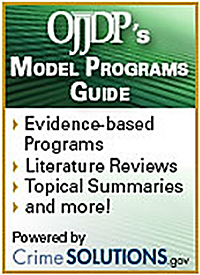 In addition, the Model Programs Guide offers a School-Based Bullying Prevention Implementation Guide (I-Guide), which describes the most common types of school-based anti-bullying programs, including awareness-raising efforts, mediation and conflict resolution, curricular approaches, and comprehensive approaches. General information on the effectiveness of bullying prevention programs for grades K–12 is offered as well.
In addition, the Model Programs Guide offers a School-Based Bullying Prevention Implementation Guide (I-Guide), which describes the most common types of school-based anti-bullying programs, including awareness-raising efforts, mediation and conflict resolution, curricular approaches, and comprehensive approaches. General information on the effectiveness of bullying prevention programs for grades K–12 is offered as well.
Developments in technology and social media have intensified the challenge of addressing bullying. Online harassment through social media, email, and text messages is often difficult for adults to notice or identify. Without adult supervision, the behavior is more likely to continue unchecked in a virtual environment. Increasingly, law enforcement officers are being contacted with complaints of cyberbullying.
Each state addresses bullying differently, through laws and model policies that provide guidance to districts and schools. Stopbullying.gov provides current information on the laws and policies that operate in individual states.
On August 20, 2018, the Federal Partners in Bullying Prevention sponsored a Cyberbullying Prevention Summit in Rockville, MD. Speakers included First Lady Melania Trump, senior federal officials, and leaders from the OJJDP-supported Internet Crimes Against Children (ICAC) Task Force program.In her remarks, the First Lady spoke of her Be Best campaign, which addresses youth health and well-being, social media use, and opioid abuse. "In today's global society, social media is an integral part of our children's daily lives," Mrs. Trump said. "'Be Best' chooses to focus on the importance of teaching our next generation how to conduct themselves safely and in a positive manner in an online setting."
Resources:
For more information about online safety, visit the ICAC Task Force program's Internet Safety page.
The StopBullying.gov website provides comprehensive information and resources on how to prevent and respond to bullying. See also the Centers for Disease Control and Prevention’s Preventing Bullying fact sheet.
OJJDP is in the process of revising its policies and reorganizing its structure to facilitate consistent communication between OJJDP and the states, enhance monitoring and performance related to the four core requirements of the Juvenile Justice and Delinquency Prevention (JJDP) Act, and increase coordination of research efforts.
Key to the reorganization is OJJDP’s new approach to the Title II Formula Grants program. The Title II application process will be streamlined, decreasing the administrative burden on states and freeing them up to do more direct work with youth and communities. In addition, OJJDP will put into effect an outcome-based approach for states to address the disproportionate involvement of minority youth in the justice system. By helping states consider all the potential factors that contribute to disproportionate minority contact, states can craft solutions relevant to their jurisdictions that not only reduce disproportionate minority contact, but also ensure youth accountability and public safety.
The newly reorganized Office significantly increases the number of staff who provide oversight and technical assistance to states and territories awarded Title II funding under the JJDP Act. Most importantly, the reorganization will help ensure states’ adherence to the Act and compliance with its core protections.
Plans also include transferring OJJDP’s research and evaluation functions to the National Institute of Justice (NIJ). At NIJ, research and evaluation staff will have access to a research infrastructure and the opportunity to collaborate with other social scientist colleagues who are also working on juvenile justice research as part of a larger research agenda. Both NIJ and OJJDP conduct juvenile justice research, which they coordinate to ensure there is no duplication of effort. Consolidating juvenile justice research within NIJ will simplify that coordination and support the development of a coherent and broad research agenda.
OJJDP’s reorganization includes the following divisions: Prevention, Intervention, Special Victims and Violent Offenders, State Relations and Assistance, Communications and Coordination, and Budget.
The Prevention Division manages initiatives intended to deter youth from delinquency and criminality. These initiatives include mentoring and tribal youth programs, and efforts to address bullying and children’s exposure to violence.
The Intervention Division administers nontraditional programs that are geared toward keeping youth from moving deeper into the court system. The division oversees OJJDP’s work in the areas of diversion programming, drug courts, opioid abuse, community supervision, corrections, and reentry, among other programs and initiatives.
The Special Victims and Violent Offenders Division focuses on protecting children from victimization, preventing and responding to youth violence, and holding offenders accountable. Key programs and initiatives include the National Center for Missing & Exploited Children, the AMBER Alert and Internet Crimes Against Children Task Force programs, as well as prosecutor training initiatives and efforts to stop gang violence.
The State Relations and Assistance Division administers OJJDP’s Title II Formula Grants program,
which helps states and territories prevent and address delinquency and improve their juvenile justice
systems. For more information on OJJDP’s new approach to formula grants, see the article “State Relations and Assistance Division: Reimagining the Title II Formula Grants Program.”
The Communications and Coordination Division manages the Office’s communications, training and technical assistance, and grants coordination functions. The division also oversees the activities of the Federal Advisory Committee on Juvenile Justice and the Coordinating Council on Juvenile Justice and Delinquency Prevention.
The Budget Division oversees the operational activities of OJJDP, including budget and award administration services, human resources, planning and performance measures, contract and procurement support, and administrative support functions.
The work of the four programmatic divisions—Prevention, Intervention, Special Victims and Violent Offenders, and State Relations and Assistance—will be highlighted in this and future issues of the newsletter.
OJJDP’s Title II Formula Grants program helps states address juvenile delinquency and support improvements to the juvenile justice system. Formula grant funding also helps states address the core protections of the Juvenile Justice and Delinquency Prevention Act (deinstitutionalization of status offenders, separation of juveniles from adult inmates, and removal of juveniles from adult jails and lockups), as well as system efforts to reduce disproportionate minority contact (DMC) with the juvenile justice system.
As part of an officewide reorganization, OJJDP recently brought its Title II Formula Grants program work and the agency’s core protections work back together into the State Relations and Assistance Division. Under the direction of OJJDP Associate Administrator Dr. TeNeane Bradford, program specialists in the division will support Title II Formula Grants programming, advance states’ core protections work, and help states connect with training and technical assistance. Bringing the programmatic and core protections functions together will foster communication between these two related functions and enhance delivery of technical assistance.
States continue to see good results in the deinstitutionalization of status offenders, sight and sound separation, and removal of juveniles from adult jail. However, for a host of reasons, the disproportionate involvement of minority youth in the justice system remains largely unchanged. To address this complex issue, OJJDP leadership developed and will implement an outcome-based approach to address DMC. As OJJDP rolled out its plan, staff met with and received feedback from juvenile justice specialists and a cross-section of stakeholders on how the plan will impact local jurisdictions.
Beginning in 2019, the division will also implement a streamlined Title II application process that will simplify DMC data collection requirements. In addition, OJJDP will ask states to identify how they define success with their DMC reduction efforts and to evaluate the outcome of their DMC plans to assess what impact they had, if any, on disproportionality. OJJDP will then share every state’s self-identified goals, action plans, and outcomes on its website to help ensure transparency and accountability and to facilitate the sharing of successful strategies across jurisdictions.
On November 27–30, 2018, OJJDP will hold a Title II Formula Grants training for juvenile justice specialists, compliance monitors, and DMC coordinators in Baltimore, MD. For more information, see “Upcoming Events.”
Resources:
More information about the core protections of the Juvenile Justice and Delinquency Protection Act and about OJJDP’s Formula Grants program is available on the OJJDP website.
Youth gangs threaten public safety across urban, suburban, and rural areas. Gangs commit a disproportionate amount of violent crime and offenses, and drug-related factors and intergang conflict are major contributors to gang violence. To highlight the administration’s commitment to addressing this serious problem, President Donald J. Trump proclaimed September 16–22, 2018, as National Gang Violence Prevention Week.
For decades, through its programs, research publications, and cofunding of the National Gang Center with the Bureau of Justice Assistance, OJJDP has worked to reduce gang violence and crime. The center is a major resource for professionals in juvenile and criminal justice, law enforcement, and youth and community organizations. The center offers an array of best‐practice information, training, and strategic tools in the areas of prevention, intervention, and suppression of criminal and violent gang activity.
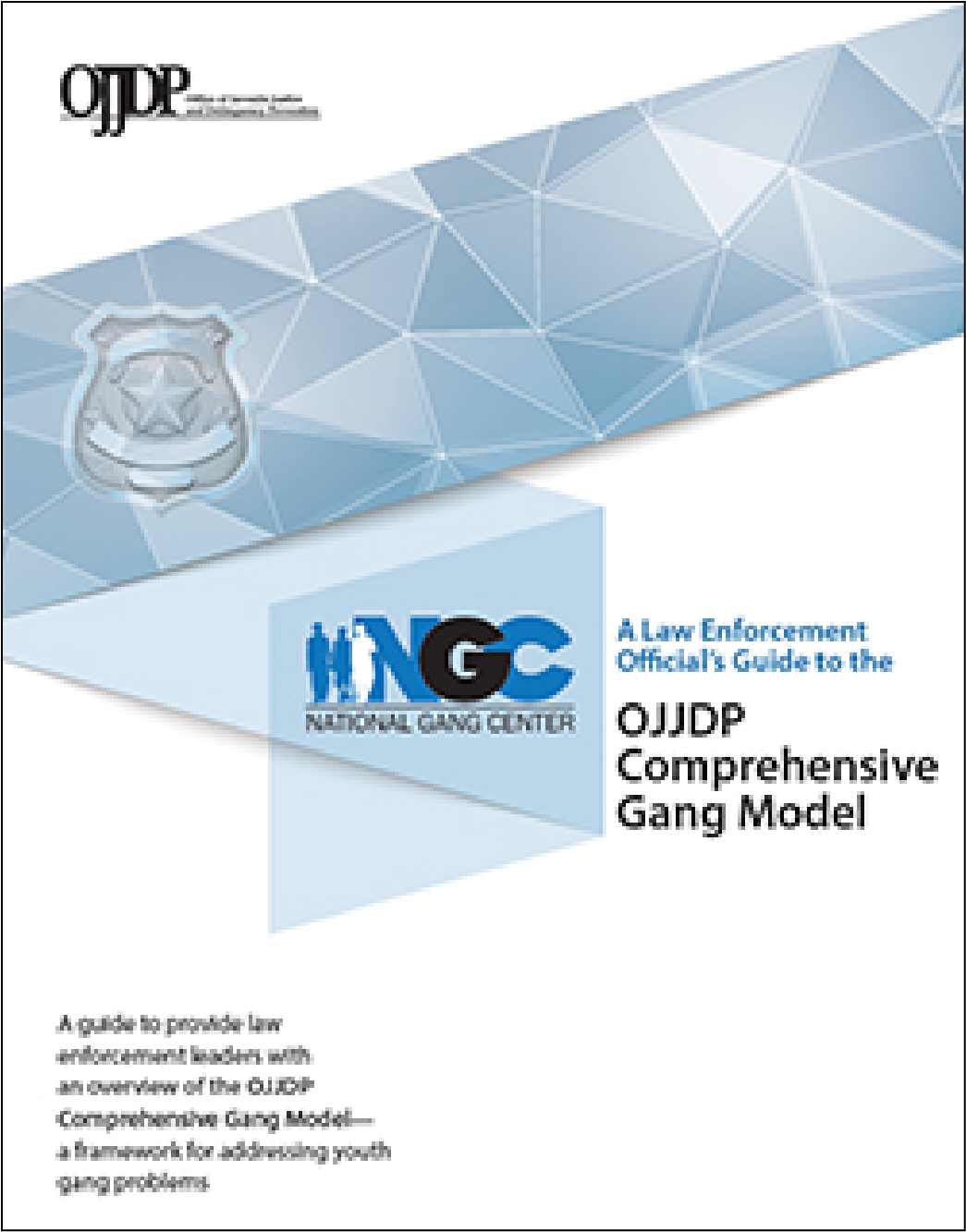 OJJDP’s Comprehensive Gang Model is an evidence-based framework for the coordination of multiple data-driven, anti-gang, and violence-reduction strategies to address serious, violent, and entrenched youth gang problems. The model has been tested with more than 20 years of implementation experience and has shown positive results in reducing serious gang-related crimes.
OJJDP’s Comprehensive Gang Model is an evidence-based framework for the coordination of multiple data-driven, anti-gang, and violence-reduction strategies to address serious, violent, and entrenched youth gang problems. The model has been tested with more than 20 years of implementation experience and has shown positive results in reducing serious gang-related crimes.
In 2017, OJJDP released A Law Enforcement Official's Guide to the OJJDP Comprehensive Gang Model, which provides information on how to effectively implement the model, including the importance of agency buy-in and collaboration with citizens and organizations to address not only the immediate threat of youth gangs but also the underlying conditions that allow them to exist.
OJJDP is currently reviewing applications received for two fiscal year 2019 grants in the area of gang suppression:
- Gang Suppression Planning Grants Program. Funding will support jurisdictions that have high levels of youth-perpetrated gun crime and gang violence and are prepared to develop communitywide, data-driven responses. Awardees will undertake strategic planning and capacity-building work through multidisciplinary and community partnerships.
- Gang Suppression: A Law Enforcement and Prosecutorial Approach To Address Gang Recruitment of Unaccompanied Alien Children. This program is designed to reduce violent crime, gangs (specifically transnational gangs), and victimization of unaccompanied minor children. Funding will support selected jurisdictions to undertake strategic planning and capacity-building work.
Resources:
Comprehensive resources for assessing community gang problems and implementing intervention and prevention strategies, part of OJJDP’s Comprehensive Gang Model, are available on the National Gang Center website.
To learn more about research in the area of gang prevention, read the literature review in OJJDP’s Model Programs Guide. See also the guide’s evaluations of 14 programs to address gang violence and crime.
Detailed information on gang prevention is also available at Youth.gov.
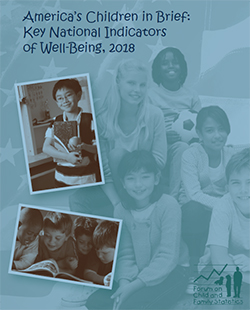 The Federal Interagency Forum on Child and Family Statistics, a collection of 23 federal government agencies involved in research and activities related to children and families, has released America’s Children in Brief: Key National Indicators of Well-Being, 2018. The report focuses on six measures of the status of children—exposure to violence, residential placement of juveniles, poverty and extreme poverty, health insurance continuity, homelessness, and prescription opioid misuse and use disorders.
The Federal Interagency Forum on Child and Family Statistics, a collection of 23 federal government agencies involved in research and activities related to children and families, has released America’s Children in Brief: Key National Indicators of Well-Being, 2018. The report focuses on six measures of the status of children—exposure to violence, residential placement of juveniles, poverty and extreme poverty, health insurance continuity, homelessness, and prescription opioid misuse and use disorders.
The report also includes updated statistics on children and families across 41 indicators in the areas of family and social environment, economic circumstances, healthcare, physical environment and safety, behavior, education, and health. OJJDP oversaw the collection of data for well-being indicators related to two of the six measures—exposure to violence and residential placement of juveniles. Highlights from OJJDP data in this year’s report include:
- Exposure to violence. More than one-third of all children surveyed in 2014 had experienced a physical assault and 5 percent had been sexually victimized in the past year.
- Residential placement of juveniles. The overall residential placement rate, which calculates the number of juvenile offenders placed in secure and nonsecure residential facilities, fell from 356 per 100,000 juveniles in 1997 to 152 per 100,000 in 2015.
Other highlights from the report include:
- Poverty and extreme poverty. In 2016, 18 percent of all children ages 0–17 were living in poverty (that is, in families with incomes below 100 percent of the poverty threshold), down from 22 percent in 2010. The percentage of children living in families in extreme poverty (below 50 percent of the poverty threshold) was 8 percent in 2016, down from 10 percent in 2010.
- Homelessness. In the 2015–16 school year, 1.4 million students (or about 3 percent of students in U.S. public elementary and secondary schools) were reported as being homeless.
- Prescription opioid misuse and use disorders. Among youth ages 12–17 in 2016, 0.9 million (3.5 percent) had misused prescription opioids in the past year.
Resources:
OJJDP data sources for this year’s America’s Children in Brief report include the Census of Juveniles in Residential Placement and the National Survey of Children’s Exposure to Violence.
Information on the agencies participating in the Federal Interagency Forum on Child and Family Statistics is available online.
 Stephanie Rapp, Juvenile Justice Specialist at OJJDP.
Stephanie Rapp, Juvenile Justice Specialist at OJJDP.She served most recently on the planning subcommittee for the 2018 Cyberbullying Prevention Summit, hosted by the White House and the Departments of Education, Health and Human Services, and Justice. Held on August 20, the event engaged representatives from national technology organizations, parents, teachers, and students with the goal of sharing their challenges and progress in anti-bullying efforts.
“I’ve enjoyed being part of the planning for the Bullying Prevention Summits,” said Stephanie. “The summits are invaluable contexts for disseminating the latest research findings and cutting-edge strategies for preventing and stopping bullying.”
As a member of StopBullying.gov’s editorial board, Stephanie has written or coauthored articles on a range of topics, including the role of elementary school counselors in preventing bullying, the negative effects of cyberbullying, community policing in schools to address bullying, and creating inclusive learning environments.
Stephanie has also organized Federal Partners in Bullying Prevention webinars on topics as diverse as Internet Safety and Cyberbullying and Helping Educators and Counselors Prevent Bullying of and Discrimination Against Our Nation's Muslim Youth. Other OJJDP activities Stephanie has led through the Federal Partners include writing blogs and co-organizing a bullying prevention video contest for students nationwide.
Although Stephanie is transitioning back to working in the area of gang prevention at OJJDP, she is satisfied with and grateful for her years of bullying prevention work, carried out in collaboration with her Federal Partners colleagues. “I’ve always felt it was important to create a safe school climate and a general culture of kindness for kids to learn and grow up in. I am confident that the work OJJDP has done in this area has made a tangible difference in this important effort.”
Resources:
Access OJJDP’s Model Programs Guide for evaluations of bullying prevention programs, a literature review on the topic of bullying, and a School-Based Bullying Prevention Implementation Guide (I-Guide).
For more information about online safety, visit the OJJDP-supported Internet Crimes Against Children Task Force and International Association of Chiefs of Police websites.
OJJDP’s Risk Assessment and Behavioral Health Screening Project, cofunded in 2014 with the John D. and Catherine T. MacArthur Foundation, examined whether using a risk assessment for reoffending coupled with mental health and substance use screening protocols improves case processing, service allocation, and recidivism rates.
The study encompassed multiple probation offices in Arkansas and Rhode Island. Both states administered a risk assessment instrument in conjunction with the Massachusetts Youth Screening Instrument-Version 2 (MAYSI-2) for mental health screening and the CRAFFT substance use screening tools. As one component of the study, the researchers examined service referral, how services were used, and recidivism outcomes of youth. They also studied if and how services and outcomes were influenced by the potential behavioral health needs identified in MAYSI-2 and CRAFFT.
Overall, the researchers found that mental health services were used more often than risk-reduction services in most sites and had little influence on recidivism. There was some evidence that substance abuse treatment reduced recidivism among youth identified in CRAFFT as having a substance use problem.
The researchers found variations across sites in the implementation of MAYSI-2 and CRAFFT and how the information was used. In one state, youth who scored high on the mental health and substance use screening tools were more likely than other youth to receive behavioral health services. This suggested that probation officers at that site followed policies and protocols for using these tools for referrals for mental health evaluations, which often result in referrals to mental health services. In the other state, however, youth scoring as critical cases on MAYSI-2 were no more likely than their peers to receive mental health services. In both states, probation offices used the CRAFFT instrument more appropriately to match youth to services.
In addition, the researchers found that only one probation office had a diverse set of service resources, many of which addressed delinquency risk factors. The others had limited service resource options and tended to rely instead on mental health services as the primary treatment option, rather than targeting risk-reduction services based on individual needs.
The study findings suggest that following both policies and protocols for using screening and assessment instruments and having a diverse array of service options influence the degree to which referrals to services match risk factors identified in the risk assessment and behavioral health screenings. If those referrals are not based on youth’s individual risk factors, then it is unlikely that use of a risk assessment would influence recidivism.
Resource:
Read OJJDP’s Research in Brief, Risk Assessment and Behavioral Health Screening Project.
The final technical report describing the Risk Assessment and Behavioral Health Screening Project may be accessed on the National Criminal Justice Reference Service website.
Medical Training Academy and Legal Training Academy: November 13–15, 2018
 To be held in Huntsville, AL, these two concurrent trainings are designed to provide an overview of the medical and legal aspects of child sex abuse cases. The trainings are hosted by the OJJDP-supported Southern Regional Children’s Advocacy Center. Topics covered in the medical track include child development and sexual maturity, documentation of cases, and human trafficking. Topics covered in the legal track include building a strong case, forensic interviewing, and legal ethics. The two tracks will occasionally be combined for joint sessions. Registration information is available online.
To be held in Huntsville, AL, these two concurrent trainings are designed to provide an overview of the medical and legal aspects of child sex abuse cases. The trainings are hosted by the OJJDP-supported Southern Regional Children’s Advocacy Center. Topics covered in the medical track include child development and sexual maturity, documentation of cases, and human trafficking. Topics covered in the legal track include building a strong case, forensic interviewing, and legal ethics. The two tracks will occasionally be combined for joint sessions. Registration information is available online.
Title II Formula Grants Training: November 27–30, 2018
OJJDP will hold a Title II Formula Grants training for juvenile justice specialists, compliance monitors, and DMC coordinators in Baltimore, MD. The conference will include a training for new juvenile justice specialists; presentations on the basics of compliance monitoring and effective strategies for overcoming common obstacles in monitoring; an overview of recent Title II Formula Grant federal policy and procedure changes; and updates on the fiscal year 2019 Title II application process as well as OJJDP’s new approach to DMC. For more information, contact OJJDP.
Criminal Connections: Child Pornography and Child Sexual Abuse: December 4–5, 2018
Many offenders who sexually abuse children also possess child pornography. In 2012, more than 80 percent of men arrested for child sexual abuse were in possession of child pornography. During this training, sponsored by the National Criminal Justice Training Center, participants will learn about the additional trauma victims experience when child pornography is involved. To be held in Santa Rosa, CA, the training will explore investigative strategies that address the relationship between child sexual abuse and child pornography to supplement an investigation and corroborate victim statements. In addition, participants will learn about the most effective tools and resources to investigate sexual abuse cases and produce the most comprehensive case outcomes. Registration information is available online.
Blueprint for System Change: The American Indian Collaborative: December 6, 2018
 Sponsored by the Midwest Regional Children’s Advocacy Center, this webinar will discuss how Children's Minnesota has collaborated with the American Indian community to build meaningful relationships that foster community-generated strategies to promote children’s health and well-being. Children’s Minnesota is one of the largest freestanding pediatric health systems in the United States. In addition, it is the only health system and Level I Trauma Center in Minnesota to provide care exclusively to children from before birth through young adulthood. Registration information is available online.
Sponsored by the Midwest Regional Children’s Advocacy Center, this webinar will discuss how Children's Minnesota has collaborated with the American Indian community to build meaningful relationships that foster community-generated strategies to promote children’s health and well-being. Children’s Minnesota is one of the largest freestanding pediatric health systems in the United States. In addition, it is the only health system and Level I Trauma Center in Minnesota to provide care exclusively to children from before birth through young adulthood. Registration information is available online.
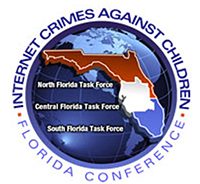
2018 Florida ICAC Training Symposium: December 10–12, 2018
The Florida Internet Crimes Against Children Task Forces, along with the Florida Department of Law Enforcement, Child Abduction Response Team, and Offender Registration and Enforcement will host this 3-day conference in Orlando, FL. The symposium aims to expand the efforts and knowledge base of law enforcement investigators and prosecutors by providing highly specialized training focused on investigating and prosecuting technology-facilitated crimes against children. Registration information is available online.
The Internet of Things (IoT): Understanding and Using IoT To Prove Your Case: December 20, 2018
The Internet of Things (IoT) refers to physical devices (e.g., cell phones, security systems, car trackers) that are able to connect to the Internet to send and receive signals and data. Cosponsored by OJJDP and the Midwest Regional Children’s Advocacy Center, this webinar will increase understanding of what devices are IoT capable and potentially what information may be recoverable to assist in investigations, prosecutions, or adjudications. Participants will learn about devices that are currently classified as part of IoT, emerging IoT technology, and ways to detect what may be contained in IoT devices. Issues of search and seizure for these devices will also be discussed. Registration information is available online.
Child Homicide Investigations: January 26–27, 2019
The National Criminal Justice Training Center will hold this training in San Diego, CA. The training will focus on understanding and building relationships between forensic pathologists, homicide investigators, and prosecutors to successfully investigate and prosecute child homicide cases. Prosecutors as well as court system, law enforcement, social work, and victim service professionals would benefit from the training. Registration information is available online.
National Mentoring Summit: January 30–February 1, 2019
 The ninth annual National Mentoring Summit will take place in Washington, DC. Organized by MENTOR: The National Mentoring Partnership and supported by OJJDP, the summit will feature more than 80 workshops that showcase exemplary program models, collaborations, research, and innovations that have positive implications for strengthening the mentoring field. The summit is the only national convening of youth mentoring professionals, researchers, philanthropic investors, and government and civic leaders that is designed to strengthen and expand quality mentoring relationships for young people across the country. OJJDP hosts an annual grantee meeting prior to the summit to train new grantees on federal grants management requirements and the Elements of Effective Practice for Mentoring. Registration information is available online.
The ninth annual National Mentoring Summit will take place in Washington, DC. Organized by MENTOR: The National Mentoring Partnership and supported by OJJDP, the summit will feature more than 80 workshops that showcase exemplary program models, collaborations, research, and innovations that have positive implications for strengthening the mentoring field. The summit is the only national convening of youth mentoring professionals, researchers, philanthropic investors, and government and civic leaders that is designed to strengthen and expand quality mentoring relationships for young people across the country. OJJDP hosts an annual grantee meeting prior to the summit to train new grantees on federal grants management requirements and the Elements of Effective Practice for Mentoring. Registration information is available online.
Matt M. Dummermuth To Lead Office of Justice Programs
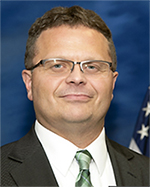 Matt M. Dummermuth, Principal Deputy Assistant Attorney General, Office of Justice Programs, U.S. Department of Justice.
Matt M. Dummermuth, Principal Deputy Assistant Attorney General, Office of Justice Programs, U.S. Department of Justice.On October 5, 2018, the Department of Justice announced Matt M. Dummermuth as the head of the Office of Justice Programs.
As Principal Deputy Assistant Attorney General, Mr. Dummermuth leads the Justice Department’s principal funding, research, and statistical component, overseeing more than $5 billion in grants and other investments intended to support state, local, and tribal criminal and juvenile justice activities and victim services.
Mr. Dummermuth served as United States Attorney for the Northern District of Iowa from 2007 to 2009. Under his leadership, the office successfully orchestrated the nation’s most successful criminal immigration worksite enforcement action. His office prosecuted record numbers of child exploitation defendants and launched an Internet-predator warning program that reached more than 42,000 students in 150 middle schools. In addition, he created the first human trafficking task force in Iowa.
He previously served in the Justice Department as Counsel and Special Assistant to the Assistant Attorney General for Civil Rights, and as a Special Assistant United States Attorney in the Eastern District of Virginia. Before joining the Office of Justice Programs, Mr. Dummermuth was in private practice in Iowa, where he focused primarily on civil litigation involving constitutional, governmental, agricultural, and business matters.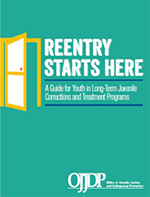
Blog: How OJJDP Is Supporting Second Chances for Youth
In a blog post titled "OJJDP Provides Second Chance Resources for Youth, Communities," Administrator Caren Harp describes how the Trump administration and OJJDP are working to help youth and their families plan and prepare for reentry so that youth go on to live productive and crime-free lives.
Among other initiatives to reduce recidivism, the blog describes OJJDP’s recently released Reentry Starts Here: A Guide for Youth in Long-Term Juvenile Corrections and Treatment Programs. The guide provides resources that speak to common barriers youth may experience upon reentry and include action steps youth can take to address those barriers. It also includes information on returning to school, applying for housing, gaining employment, and seeking support services.
ICAC Task Force Program Introduces Incident Response Tool for Schools
The OJJDP-supported Internet Crimes Against Children Task Force program has made available a tool that will help schools respond to technology-related incidents. The tool is designed for professionals in education, emergency management, law enforcement, school counseling, and victim services.
This free resource assists schools with the steps of incident management, such as fact-finding, documentation, reporting, and engaging the appropriate school officials and other stakeholders. Through collaboration with law enforcement and the use of this tool, schools can plan and prepare an effective and appropriate response to all types of technology-related incidents.
Comprehensive information about how to use the tool is available in a recorded webinar organized by the OJJDP-supported National Criminal Justice Training Center. The webinar offers guidance on effective technology-related incident planning, the tool’s incident response flowchart and training modules, and the investigation process.
October Is National Substance Abuse Prevention Month
In 2017, more than 72,000 Americans lost their lives to drug overdoses, an increase from the 64,000 overdose deaths in 2016, according to the Centers for Disease Control and Prevention. The majority of these deaths involved opioids. To highlight the need to address these and other serious substance abuse problems, President Donald Trump on September 28, 2018, proclaimed October as National Substance Abuse Prevention Month.
OJJDP will be awarding approximately $33 million in fiscal year 2018 grants to address opioid abuse and other forms of substance abuse. Under the Opioid Affected Youth initiative, OJJDP will award more than $7 million to assist states, local governments, and tribal jurisdictions in developing data-driven responses to opioid abuse. OJJDP will also award $9.75 million to 12 organizations to create and provide mentoring services to children impacted by the opioid epidemic under its Mentoring Opportunities for Youth initiative. In addition, OJJDP will award grants to 20 jurisdictions, totaling more than $12.9 million, under its Drug Treatment Courts program. This program seeks to build the capacity of state, local, and tribal drug court programs for youth in the justice system with substance abuse problems, specifically those related to opioid abuse, as well as those with co-occurring mental health disorders.
OJJDP will award another $1.5 million to the Center for Child and Family Futures to provide training and technical support. The center is recognized as a national expert on developing, implementing, and sustaining collaborative approaches to child welfare- and court-involved families with substance abuse issues. Finally, OJJDP will award more than $1.8 million under its Family Drug Court Research and Evaluation program.
National Public Safety Partnership Holds Symposium To Prevent and Combat Violent Crime
 On September 24–26, the National Public Safety Partnership (PSP) held its 2018 symposium in Birmingham, AL. Established in June 2017 under the direction of Attorney General Jeff Sessions, PSP currently provides a single point of access to a wide array of Department of Justice (DOJ) resources, training, and technical assistance to 21 sites working to reduce violent and other serious crimes related to gangs, guns, and drugs.
On September 24–26, the National Public Safety Partnership (PSP) held its 2018 symposium in Birmingham, AL. Established in June 2017 under the direction of Attorney General Jeff Sessions, PSP currently provides a single point of access to a wide array of Department of Justice (DOJ) resources, training, and technical assistance to 21 sites working to reduce violent and other serious crimes related to gangs, guns, and drugs.
The symposium included individual meetings between representatives from PSP sites and experts on a range of topics, including crime trends, crime statistics, and crime control policy; police and prosecutor partnerships; using crime analysis and data-driven policing; strategies to address crime; and community partnerships and constitutional policing. The symposium also included guided roundtable discussions focusing on the establishment of peer networks for local law enforcement, federal law enforcement, prosecutors, and U.S. Attorneys.
OJJDP has supported PSP through training and technical assistance on juvenile crime and violence prevention, including best practices on gang prevention, intervention, and suppression through the National Gang Center. Cynthia Pappas, OJJDP Senior Policy Advisor, has been working directly with the Birmingham, AL, and Newark, NJ, sites to help them address local juvenile-related crime and violence and to access DOJ programmatic resources. Ms. Pappas also provides resources and guidance to help PSP sites reduce violent crime and increase public safety by exploring new community engagement activities designed to build positive relationships among police and the communities they serve.
Visit the National Public Safety Partnership’s Public Safety Clearinghouse for resources to help reduce violent crime and increase public safety in local communities.
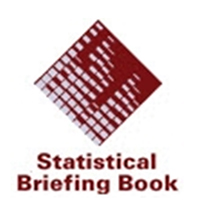 OJJDP Updates Data Resources on Statistical Briefing Book
OJJDP Updates Data Resources on Statistical Briefing Book
OJJDP has updated its Statistical Briefing Book:
- The Easy Access to Juvenile Populations data analysis tool has been updated to include data through 2017.
- The Easy Access to the FBI’s Supplementary Homicide Reports data analysis tool has been updated to include data through 2016.
- FAQs describing the number, demographics, weapon use, and victim-offender relationship of juvenile homicide victims and juvenile homicide offenders have been updated through 2016.
- FAQs about juvenile suicide victims have been updated to include data through 2016.
- FAQs about self-reported behaviors focusing on weapon carrying and risky driving behaviors reported by high school students have been updated to 2017.
Developed for OJJDP by the National Center for Juvenile Justice, the research division of the National Council of Juvenile and Family Court Judges, the Statistical Briefing Book offers easy online access to statistics on a variety of juvenile justice topics.
NCJRS Releases Special Feature on Campus Safety
The OJJDP-supported National Criminal Justice Reference Service (NCJRS) has released a special feature on campus safety that offers topical information and access to relevant resources on crime and safety as well as substance abuse. Among other trends, the feature notes a 262-percent increase in the number of reported forcible sexual offenses on college campuses from 2001 to 2015. In a study involving 27 universities, more than 23 percent of female students reported unwanted sexual contact. To learn more, read the special feature on the NCJRS website.
Established in 1972, NCJRS offers justice-related information to support research, policy, and program development worldwide. It also provides extensive reference and referral services for justice-related research, policy, and practice. NCJRS houses one of the largest criminal and juvenile justice libraries and databases in the world, the NCJRS Abstracts Database. The database contains more than 225,000 resources, that include statistics, research findings, program descriptions, congressional hearing transcripts, and training materials.
OJJDP Sponsors Monthly Mentoring Webinars
 OJJDP’s National Mentoring Resource Center and MENTOR: The National Mentoring Partnership offer a free webinar each month focused on strengthening mentoring practices, sharing new resources, and helping the field put research into practice.
OJJDP’s National Mentoring Resource Center and MENTOR: The National Mentoring Partnership offer a free webinar each month focused on strengthening mentoring practices, sharing new resources, and helping the field put research into practice.
Webinars are held on the third Thursday of each month. Links to register for an upcoming webinar, with full descriptions and panelist information, are posted during the month leading up to the webinar. Check back periodically as plans for each month are finalized. Past webinars are archived on the National Mentoring Resource Center website. Past webinar topics include supporting and inspiring tribal youth, mentoring youth with disabilities, creating ongoing mentor training, promoting screening practices to ensure safety and the suitability of mentors, and engaging and recruiting mentors.